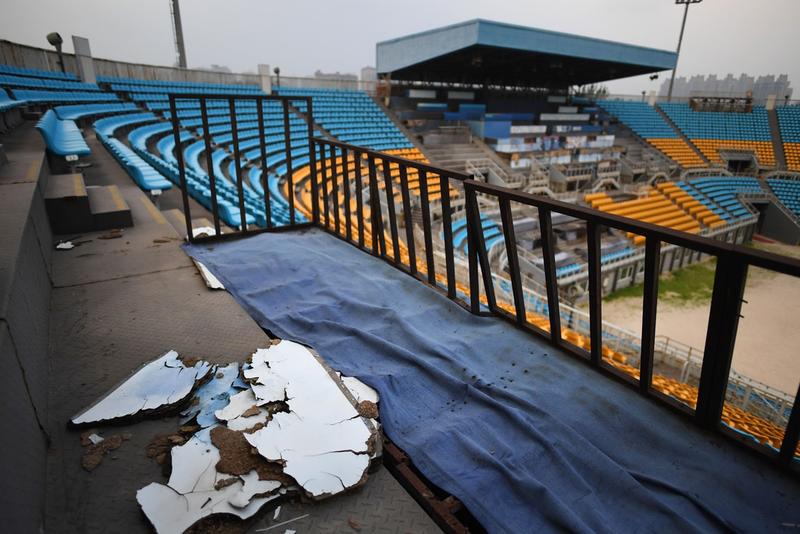
From impressive Olympic complexes that encapsulate an entire nation’s pride to the local field that lets a city show off its team spirit, where a sport is played is as important as the final score. But when a team relocates or the world turns its attention to the next big event, sports venues are often abandoned.
These neglected and deteriorating arenas all make a bid for the gold medal in the “creep factor” Olympics. Find out which of the world’s eeriest abandoned venues make our top 30.
Houston Astrodome | Texas, United States
The Houston Astrodome opened in 1965 under the way-less-cool name Harris County Domed Stadium. During its 43-year run, the stadium claimed quite a few firsts in sports arena history. It was the world’s first multi-purpose, domed sports venue, acting as homebase for MLB’s Houston Astros, the NFL’s Houston Oilers, and, for a stint in the ’70s, the NBA’s Houston Rockets.
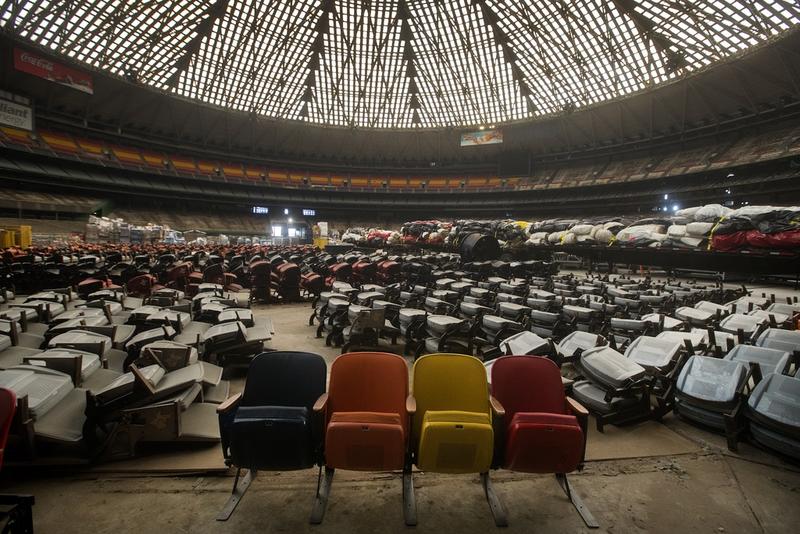
This “Eighth Wonder of the World” was also the first major sports venue to install artificial turf—you know, “AstroTurf”—and it featured the first animated scoreboard.
But in the late 1990s, all those innovative firsts didn’t amount to much. The Oilers moved on from the obsolete stadium, becoming the Tennessee Titans in ’96. The Astros followed suit a few years later and relocated to Minute Maid Park. Even the Houston Livestock Show and Rodeo found new homes in 2002.
In 2005, the Astrodome sheltered New Orleans residents who were displaced by Hurricane Katrina. And, even though parts of it were knocked down in 2013, the Astrodome nabbed a spot on the National Register of Historic Places in 2014.
Olympic Bobsleigh & Luge Track | Sarajevo, Bosnia & Herzegovina
Bosnia & Herzegovina (formerly known as Yugoslavia) won the bid to host the 1984 WInter Olympics in its capital city, Sarajevo. The bobsleigh and luge track overlooks the city from its position on the mountain Trebevic. Roughly 50,000 spectators trekked up to the track to watch the heats.
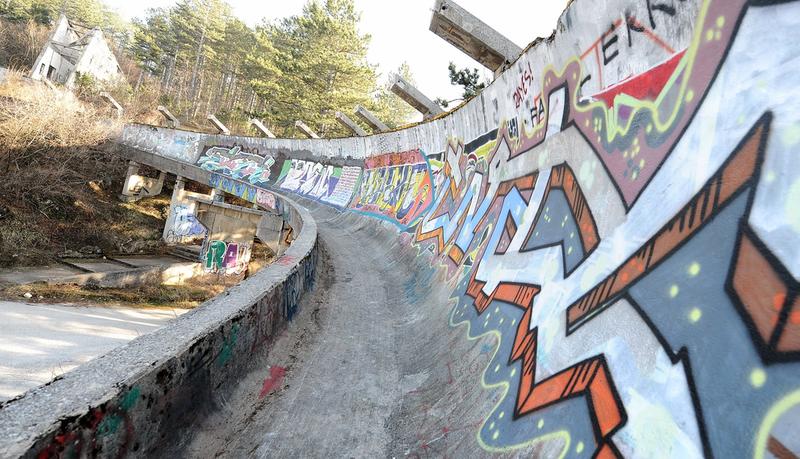
After the ’84 games came to a close, the track was used for international competitions until 1991 when a series of wars broke out. During the Siege of Sarajevo, the track was damaged while being used as an artillery installation by Bosnian Serb forces.
Now, the track is riddled with bullet holes and graffiti. But, as recently as 2018, there have been talks of refurbishing the track so that athletes can use it to train.
Miami Marine Stadium | Miami, Florida, United States
Located on Virginia Key in Miami, Florida, the Miami Marine Stadium is definitely one of the most unique venues on the list. When it opened in 1963, Marine Stadium was known as the first American facility built for the purpose of powerboat racing. But it soon became a hit venue for boxing matches and concerts; it even had a starring role in the Elvis Presley film Clambake (1967).
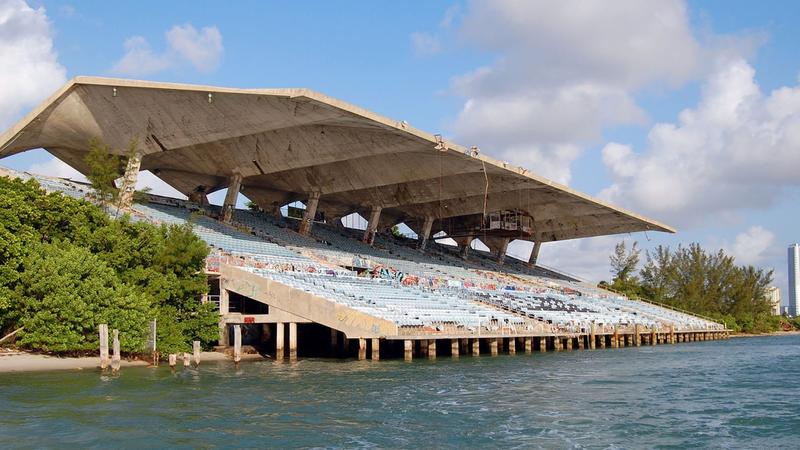
Unfortunately, 1992’s Hurricane Andrew wreaked havoc on the facility and as a result it was deemed unsafe. Over a decade later, a whopping $3 million was pledged to restore the venue, which had initially cost $2 million to build. With sweeping, panoramic views of downtown Miami, the floating venue holds a sort of beauty and intrigue, even in its desolate state.
Though its primary visitors are graffiti artists, Miami Marine Stadium was added to the National Register of Historic Places in 2018.
Avanhard Stadium | Pripyat, Ukraine
In 1986, the Chernobyl Nuclear Power Plant outside the Ukranian city of Pripyat caused one of the most devastating nuclear disasters in history. With HBO’s Chernobyl mini-series capturing the attention of audiences in 2019, the once-abandoned, radiation-filled disaster zone is quickly becoming a popular tourist destination. Within the Exclusion Zone, visitors can catch a glimpse of an overgrown amusement park or spend the night in Pripyat’s only hotel. One thing tourists can’t do, however, is play a pick-up soccer game at Avanhard Stadium.
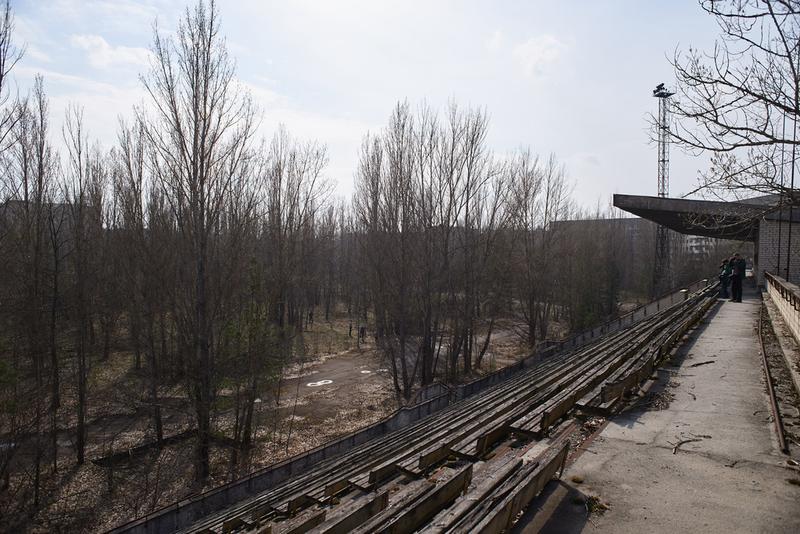
The stadium opened in 1979 after several years of construction. Meant to usher in tourism, Avanhard eventually gained some proper tenants—the FC Stroitel Pripyat. The team played in the stadium for a few years, but, like everyone else, were forced to evacuate in the wake of the Chernobyl disaster. Now, the crumbling stadium is thick with radiation and unkempt plantlife.
Those who venture into the Exclusion Zone can also see a few other abandoned sports-related complexes, including a defunct basketball court and the Azure Swimming Pool, which is considered one of the cleanest places in the city. If this dark tourism bent does anything for you, learn more about abandoned places like Pripyat here.
Hellinikon Olympic Canoe/Kayak Slalom Center | Athens, Greece
With a motto that read Welcome Home and absolutely no expense spared, Greece was determined to make the 2004 Summer Olympics unforgettable. Even the medals, which since 1928 had depicted a Roman Coliseum, were redesigned to feature the Panathenaic Stadium. The Olympic facilities got the gold treatment as well.
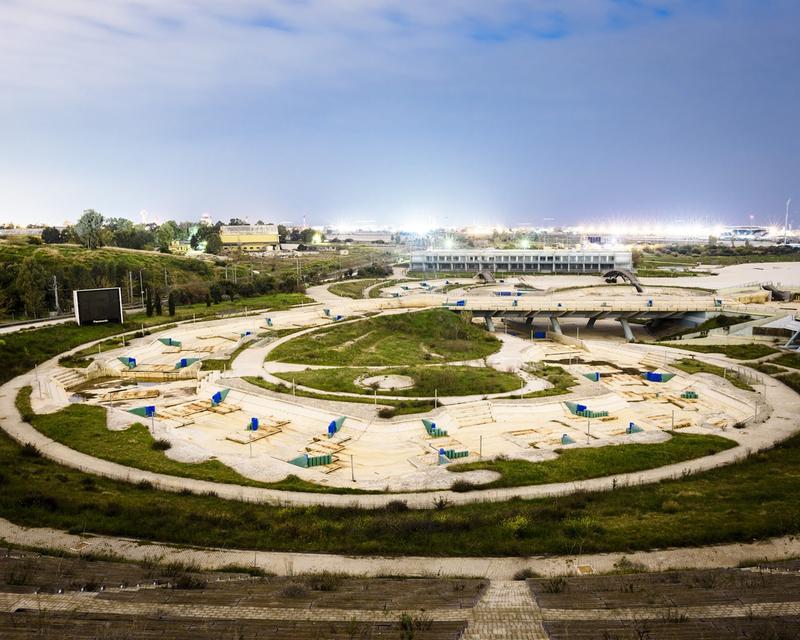
The Hellinikon Olympic Complex consisted of five venues, including the Canoe/Kayak Slalom Center. Complete with competition and training courses as well as a warm-up lake, the venue could hold 7,600 spectators. It also was unique for featuring salt water as opposed to fresh—though, today, there’s no water of any kind.
The Slalom Center is empty, with weeds sprouting up through its cracked, drained pools. A private investor has plans to turn it into a waterpark, though development hasn’t started yet..
Linnahall Amphitheater | Tallinn, Estonia
The 1980 Summer Olympics were notoriously boycotted by 66 countries, including the United States, due to the host nation’s involvement in the Soviet-Afghan War. While some athletes competed independently from their countries under the Olympic flag, the games still saw record-low attendance. Nonetheless, the Soviet Union built several new stadiums—some even referred to as palaces—for the games, including Linnahall.
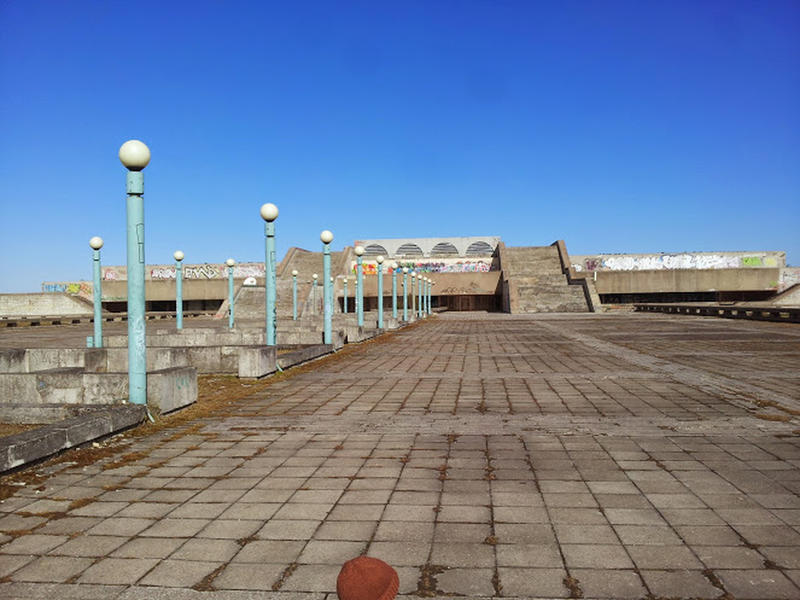
As with many Cold War-era developments, Russia insists on downplaying, recycling, or dismantling them. But Linnahall, a concrete mass that doesn’t exactly scream “tourist venture,” fell into disuse. The ice hall closed in 2009, and the concert venue followed suit a year later.
Though plans to renovate the structure have been drawn up, finding investors has proven tricky. A sign posted outside Linnahall insists that the venue is reopening in 2019, but the renovations have been postponed indefinitely.
Chaoyang Park Beach Volleyball Ground | Beijing, China
In 2008, Beijing hosted one of the most impressive—and expensive—Summer Olympics. The city’s Chaoyang Park was developed into a massive complex with nine venues in total, one of which was the Beach Volleyball Ground. With a capacity of 12,000, the courts held a myriad of Olympic matches and warmups, but then interest in the venue faded.
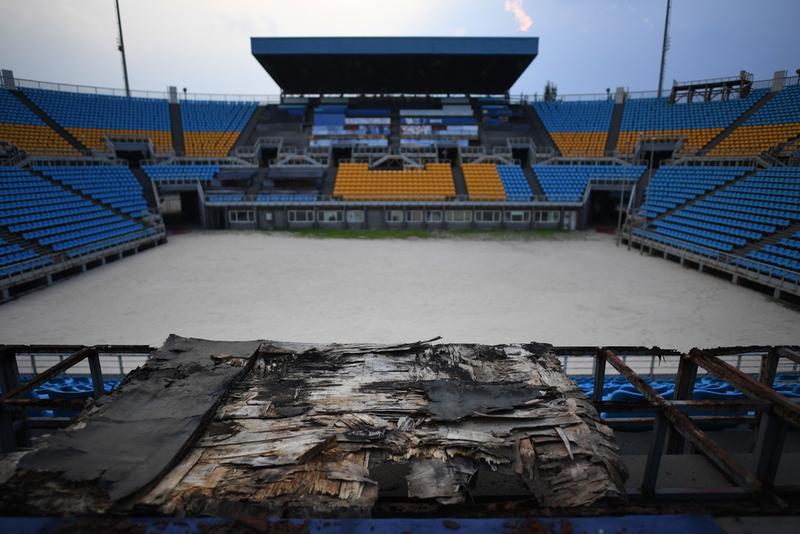
The nine venues in Chaoyang Park were meant to be temporary. Often, host cities spend more money than they make in crafting an unforgettable Olympic display. (And many of the venues on our list are a testament to that very fact.) So while creating stadiums that are meant to be torn down after a few weeks of friendly competition seems wasteful, it might be better than the alternative.
As for the Beach Volleyball Ground, it hosted the Beijing Grand Slam of the FIVB Beach Volleyball World Tour in both 2011 and 2012. During the summers, a carnival is held nearby. Otherwise, it’s game, set, and match for the venue.
Washington Coliseum | Washington DC, United States
Before its 1941 opening, the plans for the Washington Coliseum were initially met with resistance. The coach of the George Washington University basketball team complained that there were too many seats behind the scoreboard and that the sidelines were nearly nonexistent.
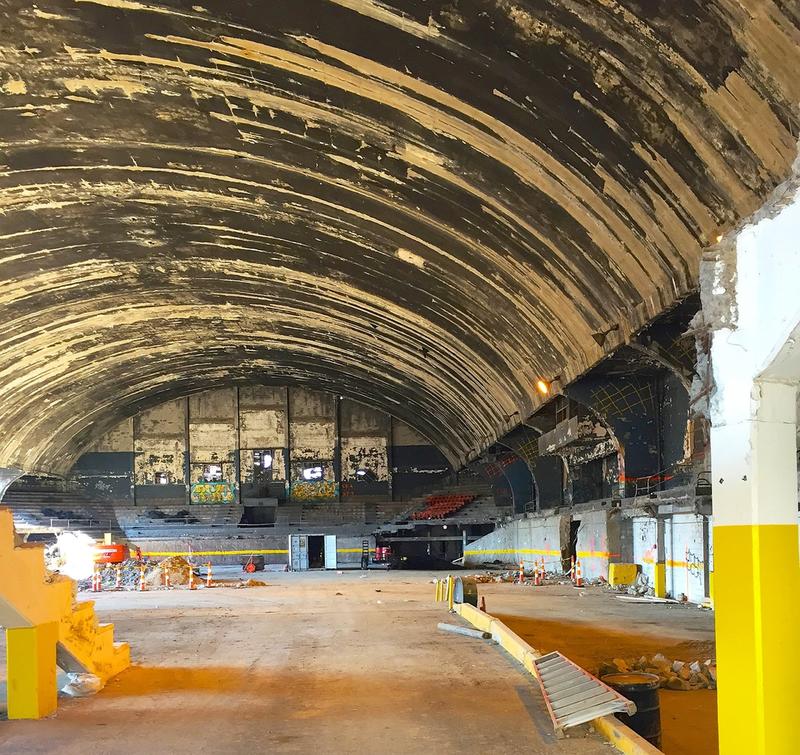
Despite the criticism, the Coliseum, or Uline Arena, became a fixture. The Beatles played their first concert in the States to a crowd of 8,000 fans at the Coliseum in 1964, less than two days after their appearance on The Ed Sullivan Show.
Malcolm X spoke at the Washington Coliseum in 1961; six years later, a police officer fired his gun at eager concert-goers in what became known as The Temptations riots; and in 1971 it was used as a detention center during anti-Vietnam War protests.
Today, this historic “concrete cavern” is part-abandoned, part-parking garage.
Rio Aquatic Center | Rio De Janeiro
While it’s true that host cities often spend unheard of amounts of money on Olympics infrastructure, it’s also true that Rio De Janeiro planned to set a new standard. The Rio Aquatic Center, which claimed a cool $50 million of the $14.2 billion expense budget, was built to be disassembled. After the games, officials planned to turn the center into new community swimming centers—one in Madureira Park and one in Campo Grande. But due to financial and political perils, this transformation has yet to happen.
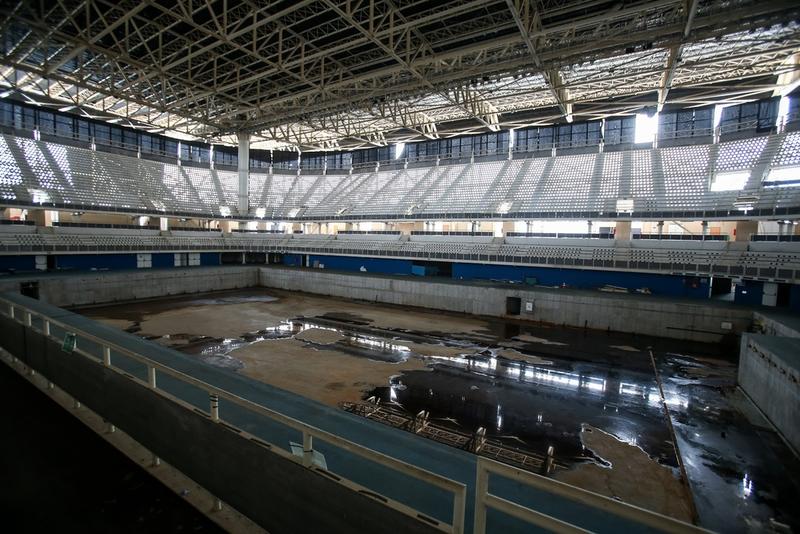
Even before slipping into a state of disuse, the Rio Aquatic Center was plagued with troubles. While training, Australian swimmers reported that the water was cloudy and had a thickness to it. Before that team could practice, there was an evacuation. And, a few days later, strong winds sheared a panel off the outside of the building.
These days, the facility is empty—and the water has turned a putrid brown color. Though it could be worse: during the games, the water in the nearby facility used for diving events became known as the “Green Monster,” due to the undesirable color of its pool’s water.
Stadium of Delphi | Delphi, Greece
Though Delphi is most commonly associated with oracles, the archeological site also contains a treasury, a theater, and a gymnasium. And, at the very top of the site, a stadium that measures in at about 584 feet. Dating back to roughly the second half of the 4th century BCE, the Stadium of Delphi is the most well-preserved ancient stadium in Greece.
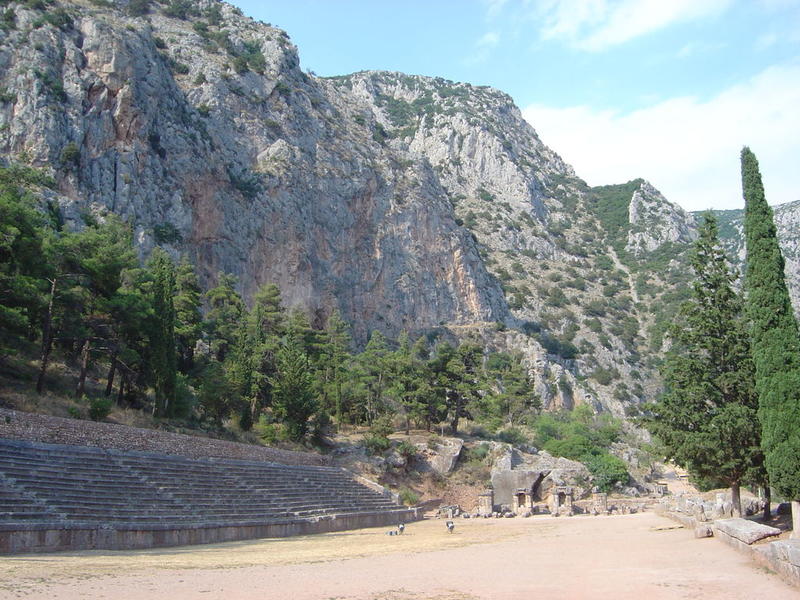
What were dubbed “gymnastic contests,” took place in stadiums like this one. Today, we more commonly file those contests under “track and field events.” Though it’s difficult to discern a precise date of construction, it’s clear that the stadium underwent several renovations. While 20 athletes could compete simultaneously on the tracks at first, it’s clear that this allotment was reduced at some point.
In its heyday, the stadium could hold 6,500 spectators, but today visitors aren’t allowed to grab a seat—or horse around.
Athlete’s Village Pool Complex | Berlin, Germany
Although Berlin’s Olympiapark Schwimmstadion, an aquatics venue built for the 1936 Summer Olympics, is still in use today, many of the training facilities and athlete’s accommodations lie abandoned. The Olympic Village is roughly nine miles from the central stadium and once housed 5,000 athletes. Now, it’s home to overgrown trees, rust, and cobwebs.
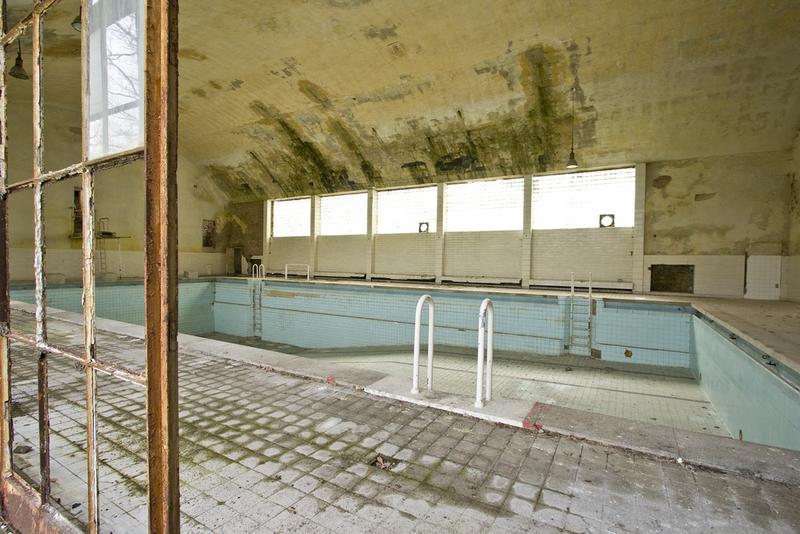
The ’36 Berlin Summer Olympics drew a lot of curiosity from spectators. The Nazis had been in power for several years and Hitler was determined to use the outcome of the games as racist propaganda.
During the games, some 370,000 visitors stopped by the Olympic Village to glimpse its amenities. Many more caught sight of the buildings on television when the ’36 Olympics became the first live sporting event broadcast to the world.
Even now the eeriness of its drained pools and shattered windows compound the complex’s discomfiting place in history.
Igman Olympic Jumps | Sarajevo, Bosnia & Herzegovina
The Igman Olympic Jumps were used for ski jumping during the 1984 Winter Olympics in Sarajevo. The structure features a large hill—367 feet high—and a normal hill—a shorter 295 feet. During the games, upwards of 90,000 spectators flocked to Igman, where a Finnish skier, Matti Nykänen, set a record, jumping 381 feet.
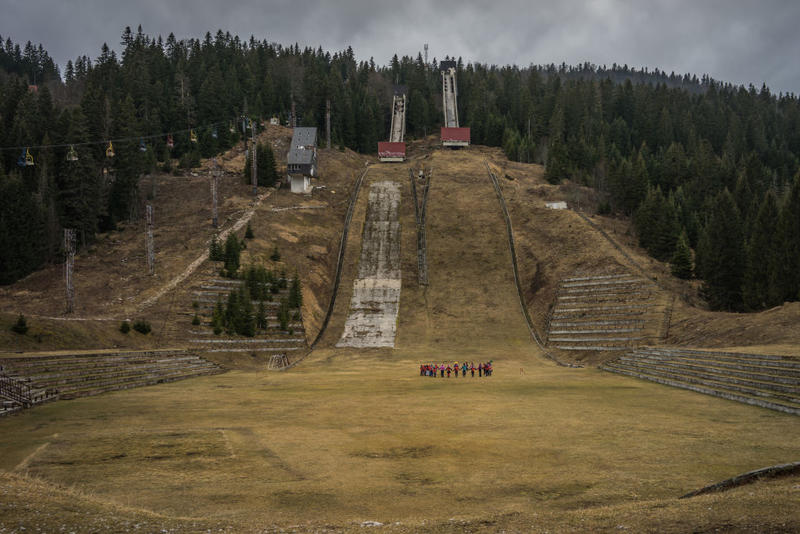
Despite the exciting turn of events, the jumps fell into a state of disrepair once the games came to an end. There haven’t been any sanctioned competitions on the hills since ’84 and, to make matters more complicated, the jumps became a battlefield during the Siege of Sarajevo in the ’90s.
Plans to refurbish the jumps have also idled, especially after Sarajevo’s bid for the 2010 games failed.
One reason the bid didn’t work out? Officials decided the city had weak infrastructure post-war. A real catch-22 situation.
Maracanã Stadium | Rio de Janeiro, Brazil
The Maracanã Stadium was originally built for the 1950 FIFA World Cup. At the time, it was, well, a bit of a mess. Work on the stadium didn’t actually wrap up before the World Cup, which meant it looked like a construction site. And, to make matters worse, it lacked a press box and restrooms. When Brazil won the bids for the 2014 FIFA World Cup and the 2016 Summer Olympics, the city of Rio seized the opportunity to refurbish Maracanã.
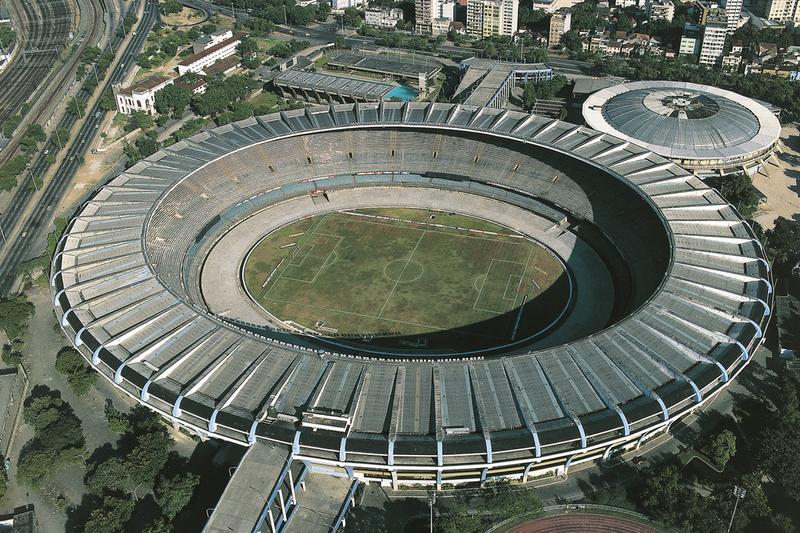
Despite impressive renovations, the stadium became dormant after the 2016 games. Reportedly, the field had dried up and browned; in other places, chunks of turf had been pulled out and windows had been smashed. Visitors were no longer permitted to tour the facility after a string of violent robberies.
How could a stadium that hosted two of the biggest sporting events in the world—virtually back-to-back—go belly up? Evidently, the stadium owed the power company $3 million and, according to the stadium’s operator, the Olympic committee returned the venue in terrible condition.
Nearly 70 years after its initial opening Maracanã Stadium still looks like a construction site.
Northlands Coliseum | Edmonton, Canada
Opening in 1974, Northlands Coliseum was home to the National Hockey League’s Edmonton Oilers as well as the Western Hockey League’s Edmonton Oil Kings. Though it cycled through a series of names, including Edmonton Coliseum and Skyreach Center, the Northlands Coliseum moniker outlasted the rest.
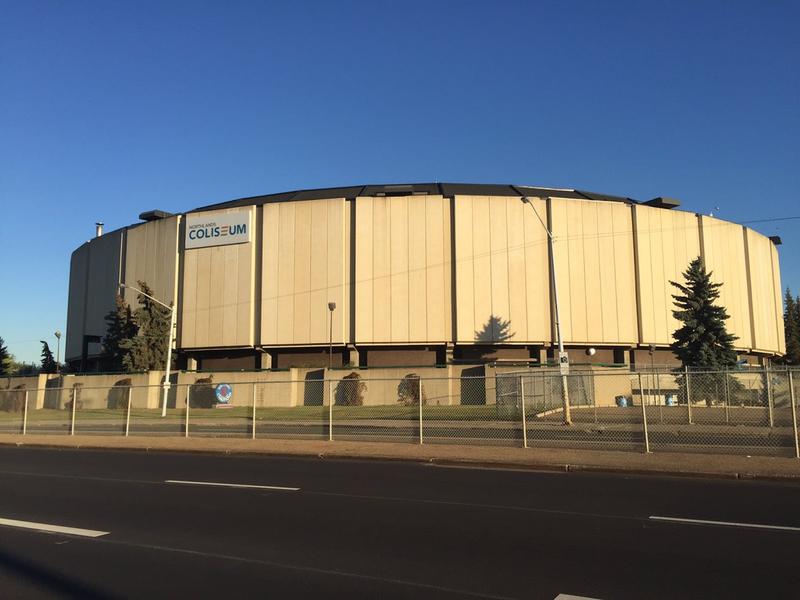
Countless Stanley Cup Finals and figure skating championships have been held at the Coliseum. And, after an impressive 42-year run, the Coliseum hosted its final NHL game on April 6, 2016.
Though hockey is a hallmark of Canada, several big-name musical acts headlined at the venue, starting with Stevie Wonder in ’74. Impressively, groups from Nickelback and Rush to Metallica and ABBA have all filmed live concerts at the Coliseum.
For awhile, it was thought Northlands would become a multi-level facility, with several rinks. But this plan proved to be more costly than just building something new.
Sochi Olympic Stadium | Sochi, Russia
When the 2014 Winter Olympics kicked off, the facilities in Sochi weren’t exactly dubbed state-of-the-art. Journalists snapped pictures of half-finished hotel rooms with faulty plumbing—if the rooms had toilets at all—and it seemed like a race for event organizers and construction workers to tie up loose ends. Russia had big plans for Sochi: the arenas were meant to serve as Russia’s center for international events. As of now, that’s a nyet.
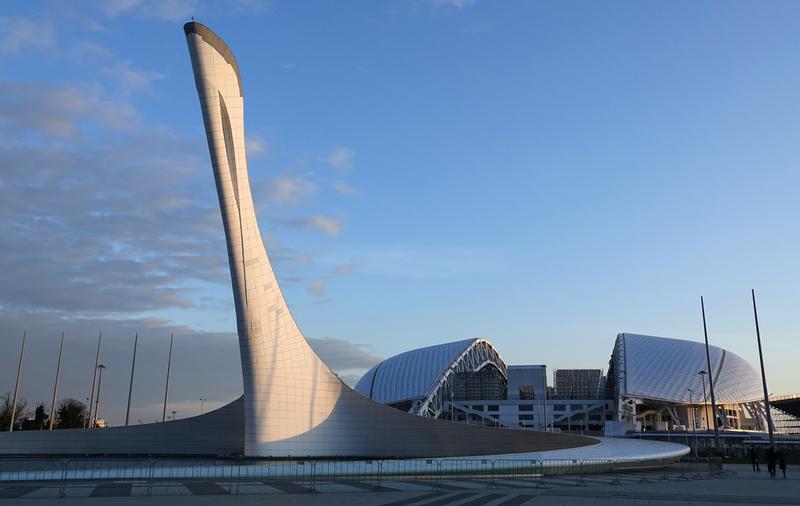
Due to growing civil unrest, Sochi’s Olympic sites are idling. Moreover, the Russian government hasn’t fully paid contractors for their work on what is now known as the most expensive winter games in history. And without any money backing them—and without those promised international events—these facilities are just slowly deteriorating.
Locals have even dubbed the $51 billion site the “Museum of Corruption,” which really takes away from the whole “Olympic spirit” thing.
Softball Stadium (Hellinikon Olympic Complex) | Athens, Greece
When Athens won the 2004 Summer Olympics bid, all of Greece was thrilled that the games would be returning home for the first time since 1896. A Herculean 10,625 athletes competed in the games—roughly 600 more athletes than predicted. Athens spared no expense, creating the iconic Hellinikon Olympic Complex on the site of a former airport. The complex was split into five venues—a general indoor arena, a baseball center, a canoe/kayak slalom course, a hockey center, and a softball stadium.
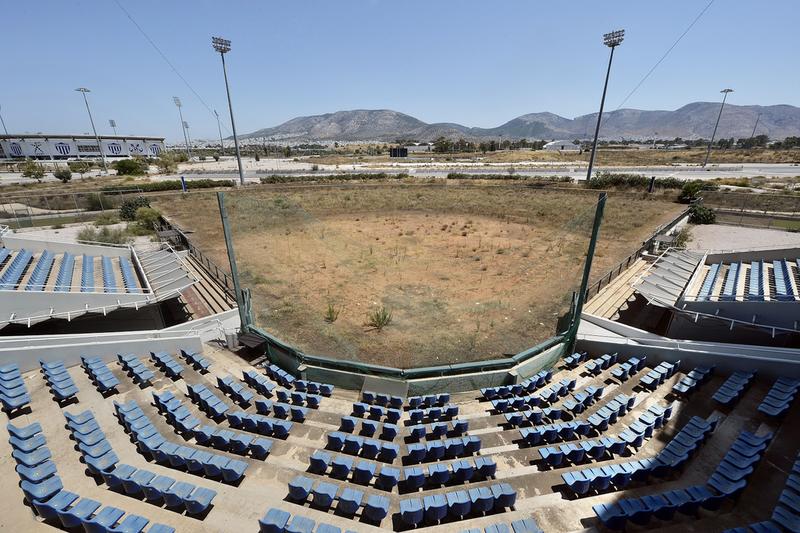
The main softball field can host 4,800 spectators—but no softball has been played there since the ’04 games. It’s probably because the infield is entirely overgrown with weeds. In fact, there’s no telling where the outfield begins. Though perhaps that’s only to the untrained eye…
Someone who minds the facility told the Standard that the stadium is “in perfect working order. It is not abandoned. It’s just that nobody ever plays softball.” And, sure, softball isn’t huge in Greece, but we’re guessing the lack of lawn-mowing has also deterred prospective players. For now, the only person the field is the Ghost Man on second.
Stade de Paris | Paris, France
In preparing for the 1924 Olympics, France had a tall order ahead: rebuild Paris in the wake of World War I’s devastation. Of course, the Olympic platform proved to be a great way to rally behind a cause and get folks back to work. In the spirit of the Olympic motto Citius, Altius, Fortius (Faster, Higher, Stronger), Parisians built numerous state-of-the-art facilities and history’s first dedicated Olympic Village.
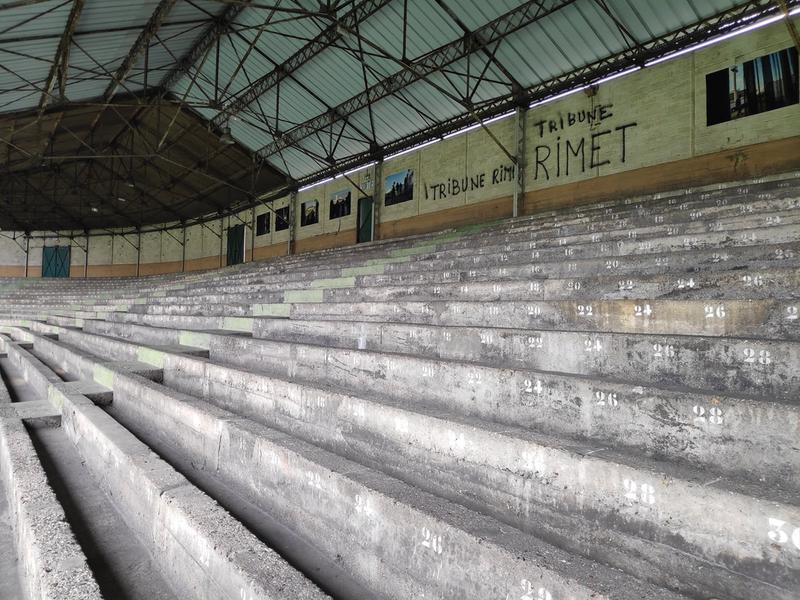
Though most of the venues were demolished after the closing ceremonies, the Stade de Paris remained. Built as a soccer stadium, the venue continued to operate primarily as a rugby field. However, a bad storm in 1999 damaged the stadium, eventually leading to its total abandonment.
Still, compared to most of the other Olympic host cities, just one deserted site is a pretty stellar track record.
Stadion Za Lužánkami | Brno, Czech Republic
Opening in 1953 with a whopping 50,000 seats for spectators, Stadion Za Lužánkami was the largest and most impressive venue in the Czech Republic. The Zbrojovka Brno football club called it their home pitch since the venue’s inception and set the all time attendance record for a Brno match when 44,120 spectators came out to watch the team take on Slavia Prague. Unfortunately, this record-setting venue has sat idle since 2001.
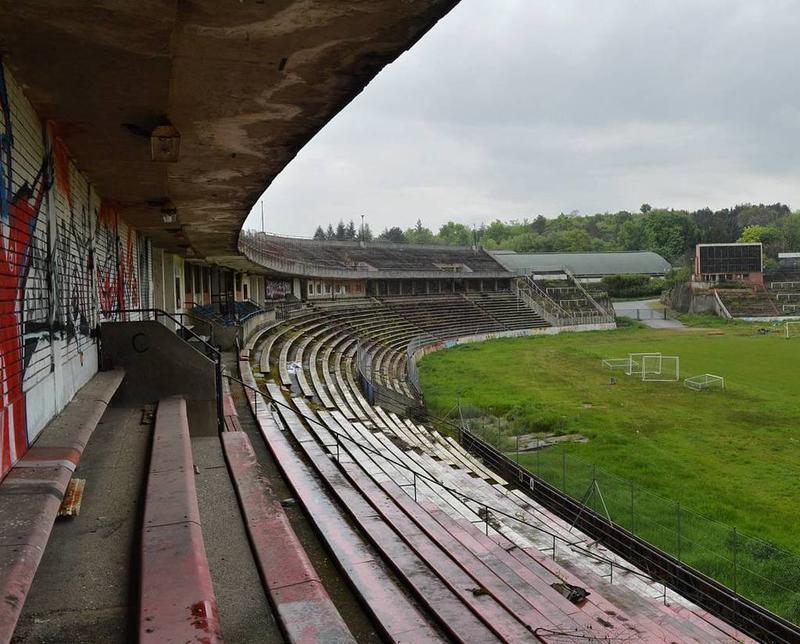
The FC Zbrojovka Brno was forced to relocate that year because Stadion Za Lužánkami no longer met FIFA’s standards. The captain of the team attempted to restore the stadium, even kicking off a crowdfunding campaign, in the hopes that the club could play a farewell match. But these best laid plans didn’t exactly pan out. Now, trees and bushes have overtaken the stadium and people experiencing homelessness have built shelters in the stands.
Nonetheless, Brno fans haven’t lost all hope. Though the stadium is idle for now, a $40 million overhaul plan has been suggested in recent years.
Trampolino Olimpico | Cortina d’Ampezzo, Italy
Before the ski jump in question was renovated and turned into the Trampolino Olimpico for the 1956 Winter Olympics, it was known as the Franchetti Jump. Thanks to generous donations from Baron Franchetti and a nearby hotel, a local sports club constructed this rather modest wooden platform in 1923. While the Franchetti allowed skiers to make jumps around 130 feet high, the renovated olympic jump saw skiers flying between 200 and 260 feet into the air.
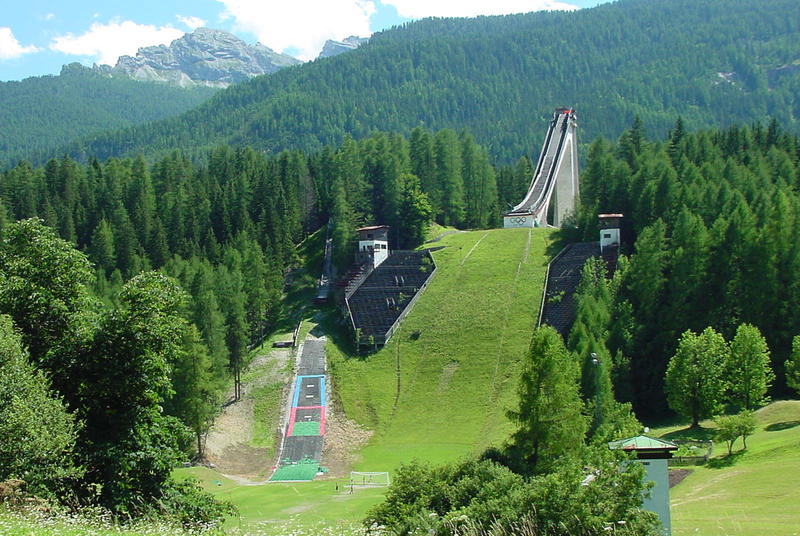
With 40,000 seats in the stadium itself and an additional 10,000 in the stands that flank the hill, Trampolino Olimpico is one of the most innovative examples of ski jump architecture. Despite this recognition, the jump lost its certification in 1990 and has remained abandoned since.
Although records have been broken on the jump, it’s biggest claim to fame is perhaps its appearance in the James Bond film For Your Eyes Only (1981).
Strahov Stadium | Prague, Czech Republic
Built as an arena for synchronized gymnastics of all things, Strahov Stadium is the largest stadium, and second largest sports venue, ever constructed. What’s it’s capacity? Well, an unheard of 250,000 spectators can fill its stands. You might wonder, But how can they all see what’s going on? Since Stahov was built for large-scale gymnastics displays, the field is three times as long and three times as wide as a standard soccer field. Meaning it’s several fields in one. Though this is impressive, it’s no wonder the bulk of the stadium fell into disrepair.
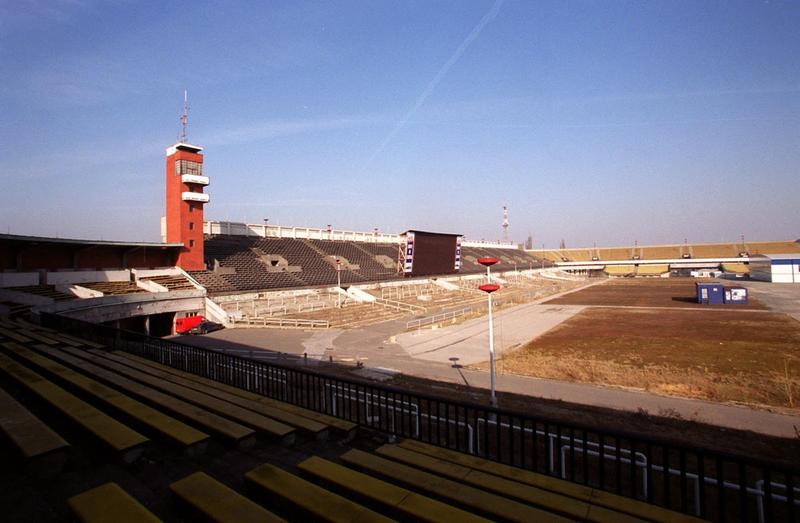
For a time, it was repurposed for concerts, hosting big-name acts such as The Rolling Stones, Pink Floyd, Aerosmith, and U2. Though it no longer hosts competitive sports events, some locals take the tram uphill in order to train on the unkempt fields, high above the old city.
Plans to renovate the site have been stop-and-go since it shuttered in the early 2000s. One plan that gained traction proposed turning the site into a “leisure mecca for the 21st century,” complete with shops and hotels. Prague even put in a bid to host the 2016 Summer Olympics, in hopes that would give them an incentive to rehabilitate the stadium, but lost out to Rio.
This UNESCO cultural heritage site was most recently featured in a 2019 Apple iPhone XR commercial, Color Flood.
Fort Lauderdale Stadium | Fort Lauderdale, Florida, United States
The Fort Lauderdale Stadium is best known for being the Bronx Bombers home away from home. Or, at least, formerly. And while this dilapidated structure is only a small step down from Yankee Stadium itself, it’s still a step down. After using it as a Spring Training homebase between 1962 and 1995, the 27-time World Series champs officially called it quits.
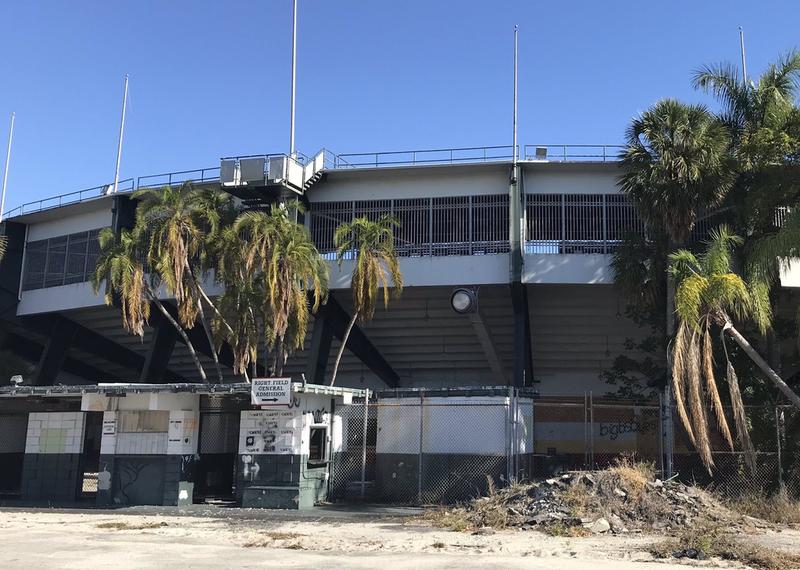
Once the Yankees vacated, the Baltimore Orioles moved in, conducting the team’s Spring Training there from 1996 to 2009. After that, it became difficult for the stadium to find a stable tenant. Over the years, a few minor league baseball teams with super original names—including the Fort Lauderdale Yankees and the Fort Lauderdale Red Sox—called the stadium home, but after the Orioles left the venue fit snugly into the “abandoned” category.
As of 2019, there are plans to demolish the stadium in favor of building a new arena. For what purpose? Reportedly, a soccer club founded by legendary footballer David Beckham will take up residence in the new venue.
National Olympic Stadium | Phnom Penh, Cambodia
Okay, we’ll admit it. This next one is a little unusual. The National Olympic Stadium in Cambodia’s Phnom Penh is a lovely, multi-purpose sports venue. But it was sort of abandoned from the moment it opened. How can that be? Well, despite its very specific name, the stadium never actually hosted an Olympic event. In fact, Phnom Penh never hosted the Olympics at all.
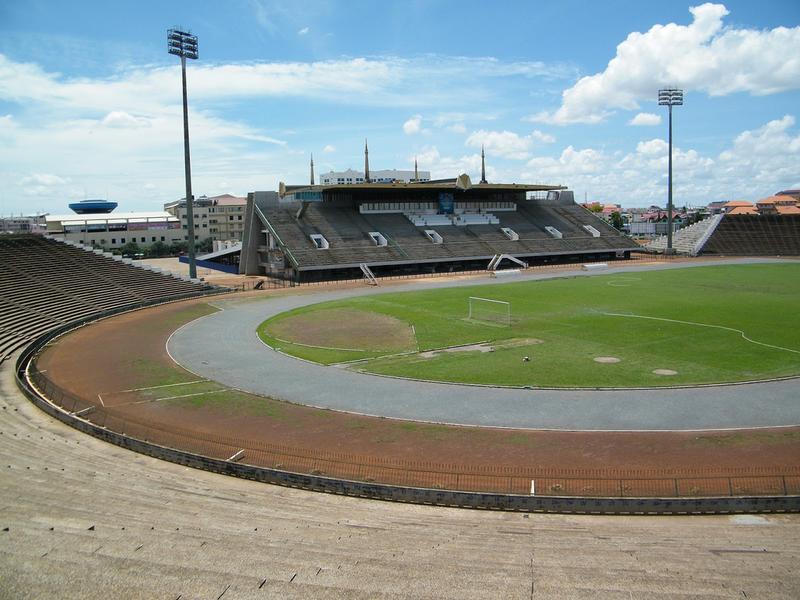
Along with other equestrian athletes, Cambodia’s first Olympic competitors were forced to complete their events for the 1956 Melbourne Summer Olympics in Sweden due to Australia’s strict animal quarantine. Cambodia then skipped the ’60 Olympics, but returned for the next two Summer Olympics.
In the ’70s, the violent, oppressive regime of Khmer Rouge banned athletics. As a result, the stadium fell into a state of disrepair.
All of this to say, the venue doesn’t have any real ties to the Olympics. Instead, it was built for the 1963 Southeast Asian Peninsular Games—which were ultimately cancelled. When it was announced that Cambodia would host the 2023 Southeast Asian Games, renovation seemed hopeful. Unfortunately, the stadium was shafted again in favor of the construction of an entirely new venue.
Stand Athletic FC “Stadium” | Ewood Bridge, England
Though the Stand Athletic Football Club stadium—if you can call it that—isn’t on the same scale as an Olympic-sized venue, it’s still a sight to behold. The football club itself was formed in 1964 and eventually dissolved in 2009. And with it went this little pitch in Greater Manchester.
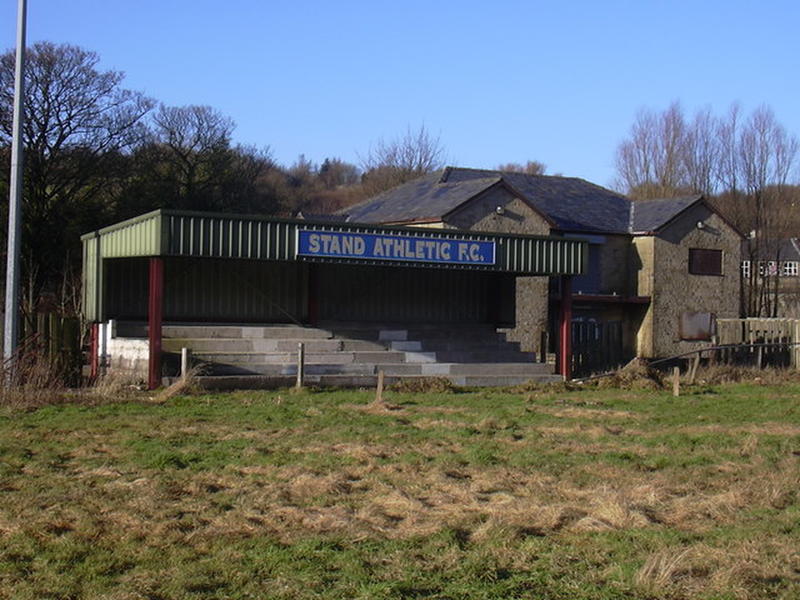
A few railway lines criss-cross this countryside venue, and a river cuts through a nearby meadow. All of this makes the venue seem like something out of a Parks & Rec soccer league for grade school students, not a Division Two team. Looking at this overgrown husk of a field now, it’s hard to believe that the venue encompassed both a match pitch and training pitch as well as a two-story clubhouse, complete with lockers and a bar. (That stand looks like it could barely fit 100 diehard fans!)
A spokesperson for the club told the Manchester Evening News, “We were successful on the pitch but not off it.” With reports of brawls between players and a “backstabbing” coach to boot, we’d say this is probably a large part of the club’s eventual dissolution.
Olympic Ski Jump | Grenoble, France
The hills are alive with the sound of wind creaking through this abandoned—but absolutely breathtaking—former Olympic ski jump. During the 1968 Winter Olympics, this Grenoble-adjacent venue in Saint-Nizier-du-Moucherotte seated an impressive 50,000 spectators.
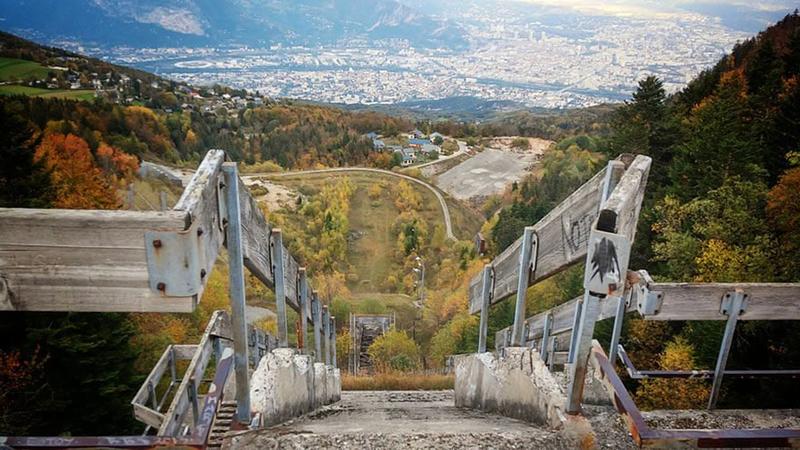
Though the longest jump during training sessions was reportedly an unbelievable 360 feet, the Soviet Union’s gold medal jumper nabbed the number one spot with a jump that topped out at 231.3 feet.
Unlike similar former Olympic jumps in Italy and Sarajevo, there haven’t been any attempts to resuscitate this particular venue. With a population of just over 1,000, the small commune town nestled in the hills of southeastern France doesn’t exactly market itself as a must-see tourist stop. Still, the beautiful foliage and incredible vistas make this one of the most intriguing abandoned sports venues on this list.
Red Hill Skate Rink | Brisbane, Australia
Known by locals as a landmark, the Red Hill Skate Rink hasn’t seen visitors zipping around on the skate floor since a devastating fire swept through the complex on Boxing Day in 2002. Despite the lack of disco music, flashing lights, and beer pitchers, the skating rink is still pretty heavily frequented by locals. Particularly, local artists.
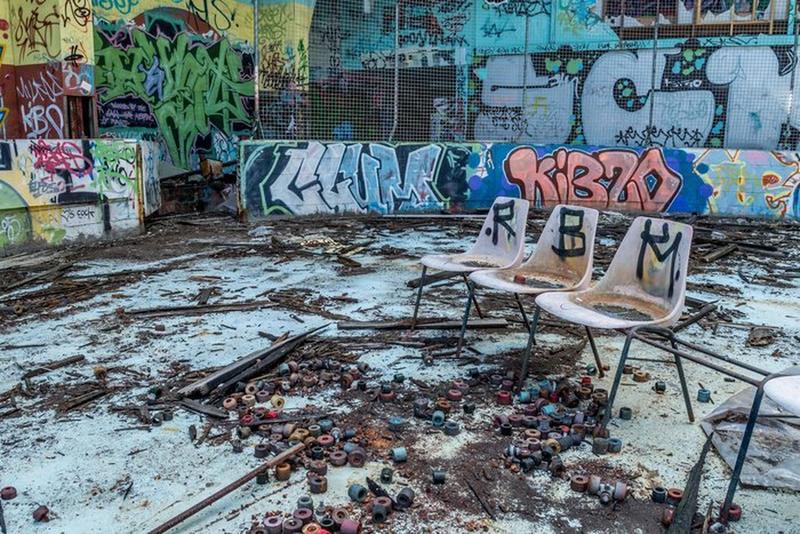
In an interview with ABC Radio Brisbane, a local developer explains that “people have broken in over time” to create lasting graffiti murals. He goes on to say that the artwork is a way to “relive the memories” of this special rink.
Though, in addition to artists, Red Hill has played host to open-air film screenings, it’s still not in the safest shape. As of 2019, there are plans to completely refurbish the venue, while still keeping all of the graffiti as well as the old skate floor in tact. While this sounds incredibly cool, this renovation/preservation project comes with a cool $10 million price tag.
Stone Mountain Tennis Complex | Atlanta, Georgia, United States
Built to host tennis events at the 1996 Atlanta-based Summer Olympics, the Stone Mountain Tennis Complex cost around $22 million to build. With a communal plaza, a main stadium court and 15 outer courts for training, the stadium could seat around 12,000 spectators.
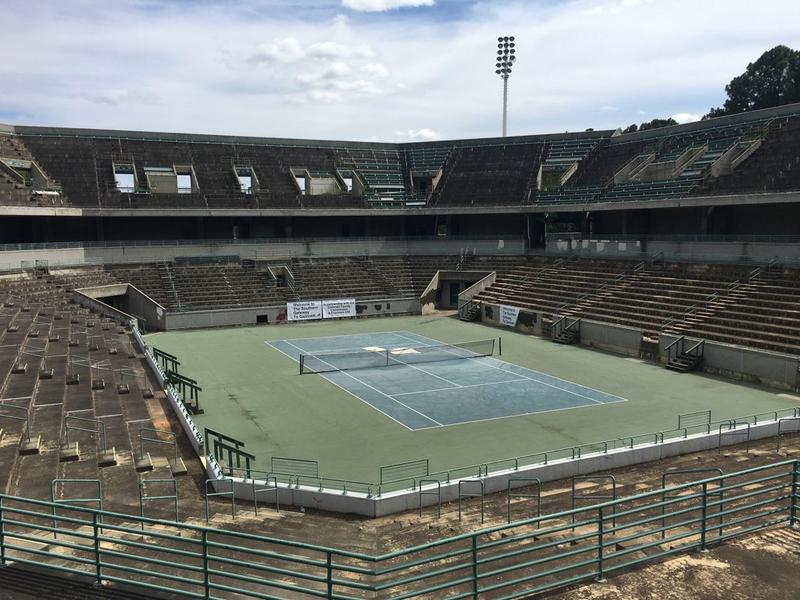
However, any victories at the Centennial Olympic Games were promptly overshadowed by the tragic bombings in Olympic Park. Tennis spectators were spared as the venue was located at Stone Mountain Park; nonetheless, the tragedy certainly shaped the games that summer. A pipe bomb, planted by Eric Robert Rudolph, injured 111 people and is connected to at least two deaths.
After the Olympics, the court hosted the 1998 Davis Cup competition featuring Andre Agassi and Jim Courier. Today, the Olympic torch can be seen from the highway—another bygone relic of the $5.14 billion undertaking.
Laoshan Bicycle MotoCross Park | Beijing, China
Marking our final trip down memory lane to the 2008 Summer Olympics is Beijing’s Laoshan Bicycle MotoCross Park. Famously, the Beijing Summer Olympics were watched by 3.5 billion people worldwide and went down in the record books as the second-most expensive games, just behind Sochi’s 2014 Winter Olympics. How much did it cost? Roughly $44 billion.
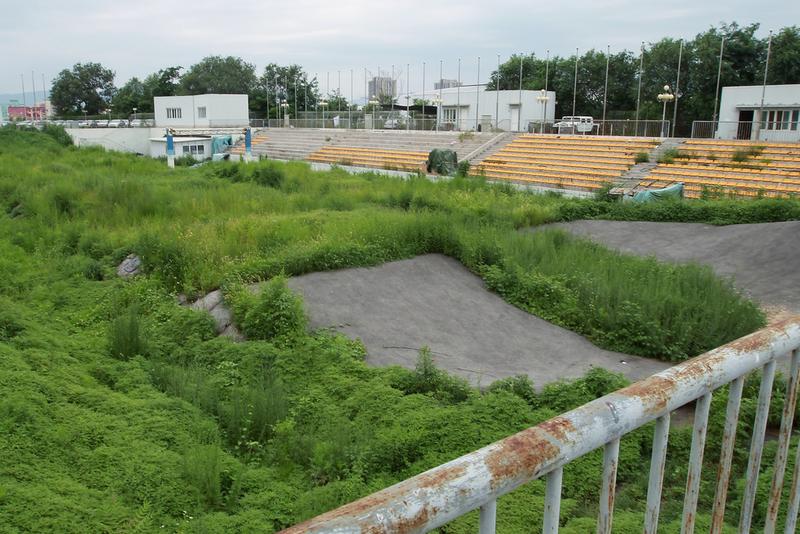
Officials claimed that surplus revenue from the games would exceed $16 million and cover their projected $15 million costs. Of course, that didn’t quite pan out. While some venues, such as the iconic “Bird’s Nest” (site of the opening and closing ceremonies), were meant to be repurposed, Beijing had other plans for the MotoCross Park.
Playing host to both men’s and women’s BMX racing events, MotoCross Park was one of nine (supposedly) temporary venues constructed for the games. Now, grass and plant life cover the track and jumps. Reportedly, locals have even turned the abandoned stadium into an unofficial community garden.
Reims-Gueux Circuit | Reims, France
Unique to our list, the Reims-Gueux Circuit was established in 1926 as the second venue of the Grand Prix de la Marne. This Grand Prix motor racing course was known for its now-famous triangular shape and featured a once-robust timekeepers’ building (featured above). But despite being located in the Champagne region of northeastern France, this circuit’s future is anything but bubbly.
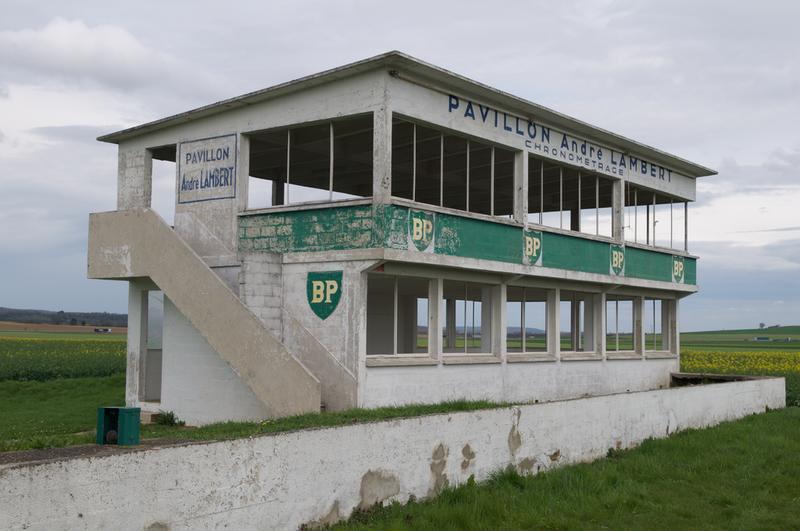
The corners and changes in elevation made this track a favorite among racers and truly set a new standard for motor racing circuits. Originally, part of the circuit ran through the village of Gueux, but was changed in 1952. Now, much of the abandoned circuit runs parallel to the main road.
Almost fifty years after its opening, the once state-of-the-art raceway was deemed obsolete—even dangerous. The last race held on the Reims-Gueux occured on June 11, 1972. Now its vestiges, from the timekeepers’ building to the once-renowned scoreboard, are relics of a bygone era.
Meadow Park | Gloucester, United Kingdom
In 2007, the National League South-Side Gloucester City Football Club had to leave their home stadium behind. And we don’t mean they had to walk away from it, or that they relocated for any of the normal reasons. It was a real SOS (Save Our Stadium) situation. Thanks to some particularly heavy rainfall, the small pitch and stands flooded.
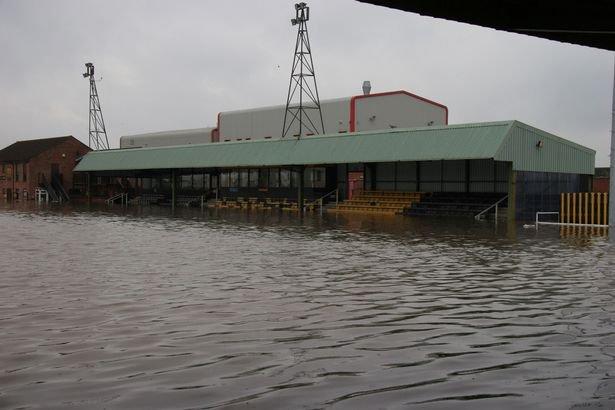
Meadow Park was Gloucester City FC’s home field between 1986 and 2007. Until this apocalyptic flood, which left the park swimming up to the goals’ crossbars.
After paddling out of there, the football club became a bit migratory, sharing pitches with nearby teams. Though Meadow Park has now returned to being above sea-level, it has sat unused and ravaged for over a decade. Eager to have a more permanent home, Gloucester City FC hopes to raise enough money to renovate the stadium and reopen it in 2020.
Coliseum | Rome, Italy
While countless teams—from the Oakland Athletics to Harvard University’s Crimson—have called their homefield simply “the Coliseum,” there’s only one true Coliseum. And that is the first-of-its name venue, also known as the Flavian Amphitheater, right in the heart of Rome. Built between 70 and 80 AD, Wonder of the World became a symbol of Imperial Rome and the new standard in stadiums. (Sorry, Greece.)
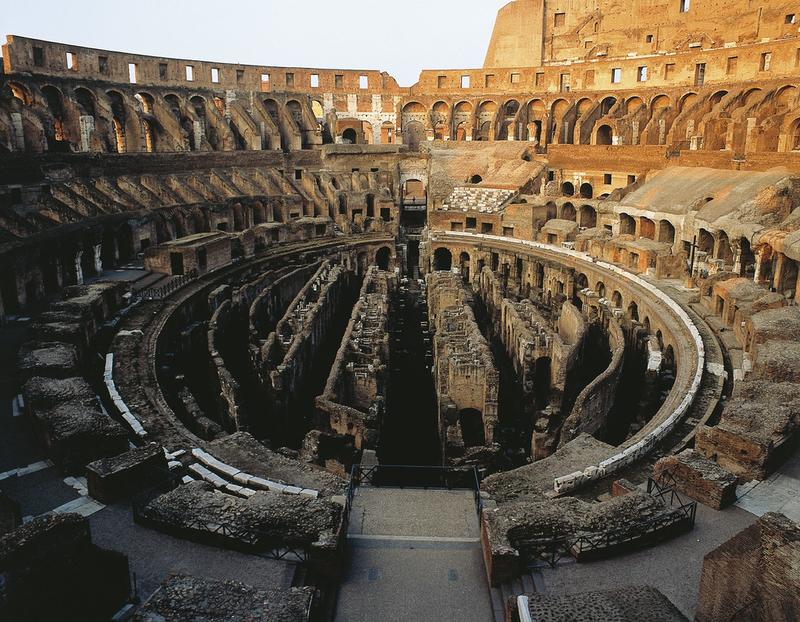
Now a must-see tourist attraction, the Coliseum (or Colosseum, depending upon which autocorrect program you’re using) once hosted gladiatorial competitions, drama performances, animal hunts, recreations of battles, and executions. Those are all things you probably already knew. But did you know it also featured mock sea battles?
It sounds a bit far-fetched—and maybe even a bit insensitive to talk about in such close proximity to the above Meadow Park—but it’s true. The Coliseum, by design, could be flooded and turned into a Dolly Parton’s Dixie-Stampede-at-Sea experience for the whole family.
Though it isn’t entirely “abandoned,” the Coliseum certainly won’t be entertaining folks the way it was intended to anytime soon. Now, it’s home to a museum and, like all good things, a pop-up marketplace.






